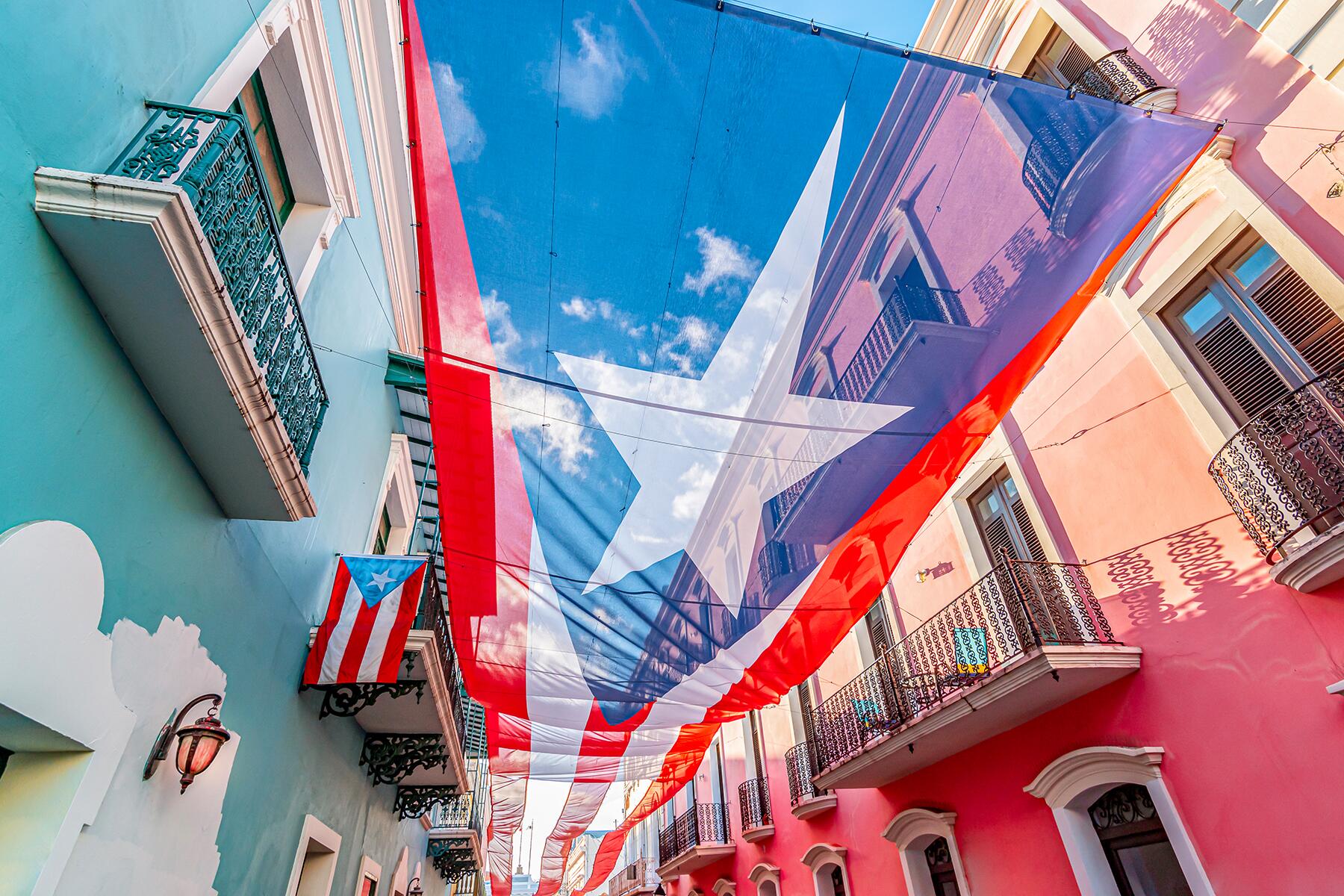Puerto Rico is showcasing its vibrant cultural fabric through art that honors the island’s heritage.
Puerto Ricans are known for widely displaying the Puerto Rican flag. You’ll find it on everything from beach towels to car seat covers. While its ubiquitous presence is often a comedic punchline, many people don’t realize that displaying or owning the flag was once prohibited throughout the island.
Puerto Rican pride is the result not just of happiness with one’s home but a sense of rebellion and having to defend it constantly. First, from European settlers. Today, from foreign investors. The only way to describe Puerto Rico’s relationship with the United States and its general status is: “it’s complicated.”
Puerto Ricans have three distinct origins—Spaniards, Indigenous Taino, and Africans. These populations blended over time and now make up the overall Puerto Rican identity, influencing everything from the island’s food to its festivals to its traditions.
“We know we are mixed,” says Rachel Smith Sepúlveda, an artist at Casa de Arte y Cultura de la Playa de Ponce. “What we want is equal visualization of all our heritage, not just one part of it. We know what we are, but we don’t know how we developed.”
Smith Sepúlveda refers to the Black and Brown voices lost over the centuries, a practice of erasure that went largely unchecked.
Recommended Fodor’s Video
Puerto Rico was developed by those who conquered it. Cities like Ponce are named after the Spanish explorer Ponce De Leon. There are monuments erected to colonial figures that have been a source of contention, with protest groups going as far as tearing down the statues.
“Very little was taught in school about Indigenous people and enslaved people,” explains Smith Sepúlveda. “Most of our social studies were about our heritage from the Spaniards since their history was longer. The rest was U.S. history. We weren’t taught about the different architects that came from Puerto Rico or events from the different counties and municipalities.”
The default Eurocentric lens doesn’t just apply to historical figures, either. Smith Sepúlveda states, “There’s a constant effort to whiten our image in the media. How Puerto Ricans are portrayed in tourism advertisements and commercials is different from how we see ourselves.”
As a result, Puerto Ricans feel increasingly excluded from the island they call home, pushed aside to make way for someone else’s slice of paradise.
Smith Sepúlveda advocates for arts and culture as a way to move forward, bridging the divide between visitors to the island and locals with a message to share.
“Art educates in many forms,” she says. “I want to highlight our identity as a community and country versus a colony.”
Several cultural centers throughout the island aim to foster this connection and showcase local art and traditions. The COPI Cultural Center in Piñones is close to San Juan. They have performances, art exhibitions, and educational activities.
In Humacao, a city on the island’s southwest corner, Casa Silvana is an alternative rural space for contemporary Afro-Puerto Rican, Afro-Caribbean, and Afro-Latino art. On the north coast, mural-covered Casa Ulanga is home to the Centro Cultural de Arecibo.
Puerto Rico’s museum scene is often overlooked. The Museo del Tabaco Herminio Torres Grillo in Caguas captures the agricultural industry’s lasting political and socioeconomic influences. Art in Santurce is found indoors and out, from the Museo de Arte de Puerto Rico to the famous Santurce murals. For context and a better explanation of the meaning behind the murals, go on a walking tour with locally owned The Art Walk PR.
Museo el Cemí in Jayuya is a masterpiece designed to look like an ancient Taino deity and housing indigenous artifacts. Various ceremonial parks provide insight into life before colonization, including The Caguana Ceremonial Indigenous Heritage Center and the Tibes Indigenous Ceremonial Park.
The African diaspora brought bomba and plena music to the island. These genres began as a way for slaves to express themselves freely through music and are now a way for locals to preserve and honor their roots. Anyone can sign up for dance lessons at places like Taller Tambuyé and Taller N’Zambi.
“We are living culture,” says Smith Sepúlveda. “It’s in everything we do. Art just makes it more present and allows us to visualize it.”
Even the Puerto Rican flag is more than meets the eye, with subtle variations in color signifying independence, protest, victory, or mourning. It is as layered and diverse as the people it represents.
Despite systematic attempts to suppress and minimize them, Puerto Rico is proud of its African and Indigenous roots. By supporting local art, visitors can experience a different side of the island and contribute to history in the making.




